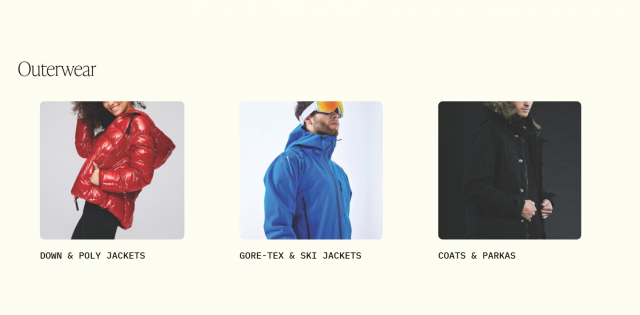please click here:
Coats are more than just a layer of warmth during colder seasons—they are iconic fashion statements, cultural markers, and essential wardrobe staples. Whether tailored for sophistication or designed for rugged outdoor use, coats tell a story about personality, lifestyle, and even history. This comprehensive guide explores the fascinating world of coats, diving into styles, fabrics, seasonal functions, and comparisons that help you choose the perfect piece.
The Historical Journey of Coats
The origins of coats date back centuries, with different societies using them as both functional garments and status symbols. In medieval Europe, fur-lined cloaks were a sign of wealth, while military-inspired trench coats from the early 20th century became mainstream after the World Wars. Over time, coats evolved to balance utility with design, bridging the gap between protection from the elements and timeless style.
Popular Types of Coats
Trench Coats
The trench coat is a classic staple, originally designed for soldiers but later embraced by Hollywood and high fashion. With its belted waist, storm flaps, and water-resistant fabric, it is both practical and stylish.
Overcoats
Overcoats are long, formal pieces often made from wool. They are best suited for business attire, keeping you warm while projecting elegance and authority.
Parkas
Parkas are heavy-duty, insulated coats designed for extreme cold. Many come with fur-lined hoods, making them favorites in snowy climates.
Pea Coats
Double-breasted and usually made from wool, pea coats originated in naval traditions. They are versatile enough to be paired with both casual and semi-formal outfits.
Puffers
Puffer jackets are known for their quilted design and down or synthetic filling, offering maximum warmth with minimal weight.
Dusters
Lightweight and long, dusters were originally used by horse riders to protect clothes from dirt. Today, they are a fashionable layering option.
Comparing Coats by Function and Style
| Coat Type | Best For | Typical Material | Level of Warmth | Style Vibe |
|---|---|---|---|---|
| Trench | Rainy weather, urban | Cotton gabardine | Medium | Classic & sleek |
| Overcoat | Formal occasions | Wool | High | Professional |
| Parka | Extreme cold | Down, synthetics | Very high | Casual outdoors |
| Pea Coat | Everyday wear | Wool | Medium-high | Smart casual |
| Puffer | Winter activities | Down, nylon | Very high | Sporty modern |
| Duster | Transitional weather | Cotton, blends | Low-medium | Effortless chic |
Fabrics That Define Coats
The choice of fabric not only affects comfort but also durability and maintenance. Wool remains a top pick for overcoats due to its natural insulation and breathability. Cotton blends are popular for trench coats as they repel water while remaining lightweight. Modern puffers rely on nylon shells combined with either goose down or advanced synthetic fills for superior warmth. Meanwhile, luxury coats often feature cashmere, which offers unmatched softness.
Seasonal Considerations
-
Autumn: Lightweight dusters and trench coats shine, providing coverage without overheating.
-
Winter: Parkas, puffers, and thick wool overcoats dominate, ensuring insulation in frigid conditions.
-
Spring: Transitional pieces like pea coats and cotton-blend trenches allow layering with comfort.
-
Summer evenings: Linen or lightweight duster coats add flair without excess warmth.
Coats as Fashion Statements
Coats are central to personal expression. A brightly colored parka makes a bold winter statement, while a black wool overcoat signals sophistication. The cut, fit, and detailing—from buttons to lapels—play crucial roles in defining how the garment complements the wearer. For many, coats become the highlight of their outfit during colder seasons.
Sustainability in Coat Production
As eco-conscious fashion grows, brands are innovating with recycled materials, organic cotton, and cruelty-free insulation alternatives. Synthetic down made from recycled plastics, for instance, reduces environmental impact without sacrificing warmth. Vintage and second-hand coats are also gaining popularity as sustainable, stylish options.
Styling Tips for Different Occasions
-
Work and Business Meetings: Opt for structured overcoats in neutral colors like navy or charcoal.
-
Casual Outings: A pea coat or short parka adds warmth without being overly formal.
-
Outdoor Adventures: Puffers and parkas with waterproof shells ensure comfort and protection.
-
Evening Events: A tailored trench or double-breasted coat elevates elegance.
Global Influence of Coats
Different cultures have contributed unique coat designs. Japanese fashion introduced avant-garde oversized silhouettes, while British tailoring perfected the trench. In colder regions like Canada, technical parkas are engineered for survival against harsh climates, blending utility with urban design.
The Future of Coats
Technology continues to influence coat design. Smart fabrics now regulate body temperature, repel water more effectively, and even integrate heating elements. As fashion merges with function, future coats may adapt dynamically to changing environments.
Frequently Asked Questions
- What is the difference between a coat and a jacket?
Generally, coats are longer and designed for colder weather, while jackets are shorter and lighter. - Are wool coats warm enough for winter?
Yes, wool coats provide excellent insulation, especially when layered, making them suitable for most winter climates. - Which coat is best for heavy snow?
Parkas and puffers are ideal for snowy conditions due to their insulation and weatherproof designs. - How do I maintain my coat?
Always check the care label. Wool and cashmere coats often require dry cleaning, while synthetic puffers can usually be machine washed. - Can coats be worn year-round?
Yes, lighter styles like dusters and trench coats are perfect for transitional seasons, while heavier parkas and overcoats work in winter.
Summary
This ultimate guide explores coats from history to modern trends, covering styles like trench, parka, pea, and puffer. It compares fabrics, seasonal functions, and cultural influences while highlighting sustainability and future innovations. Includes styling tips, a comparison table, and FAQs for practical insights.






